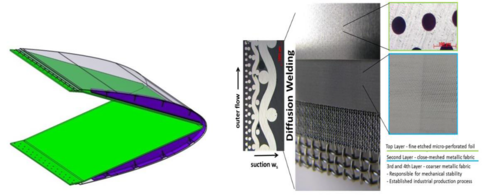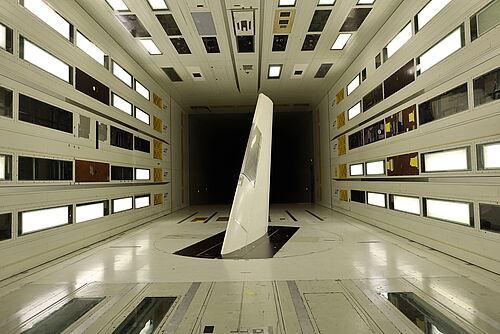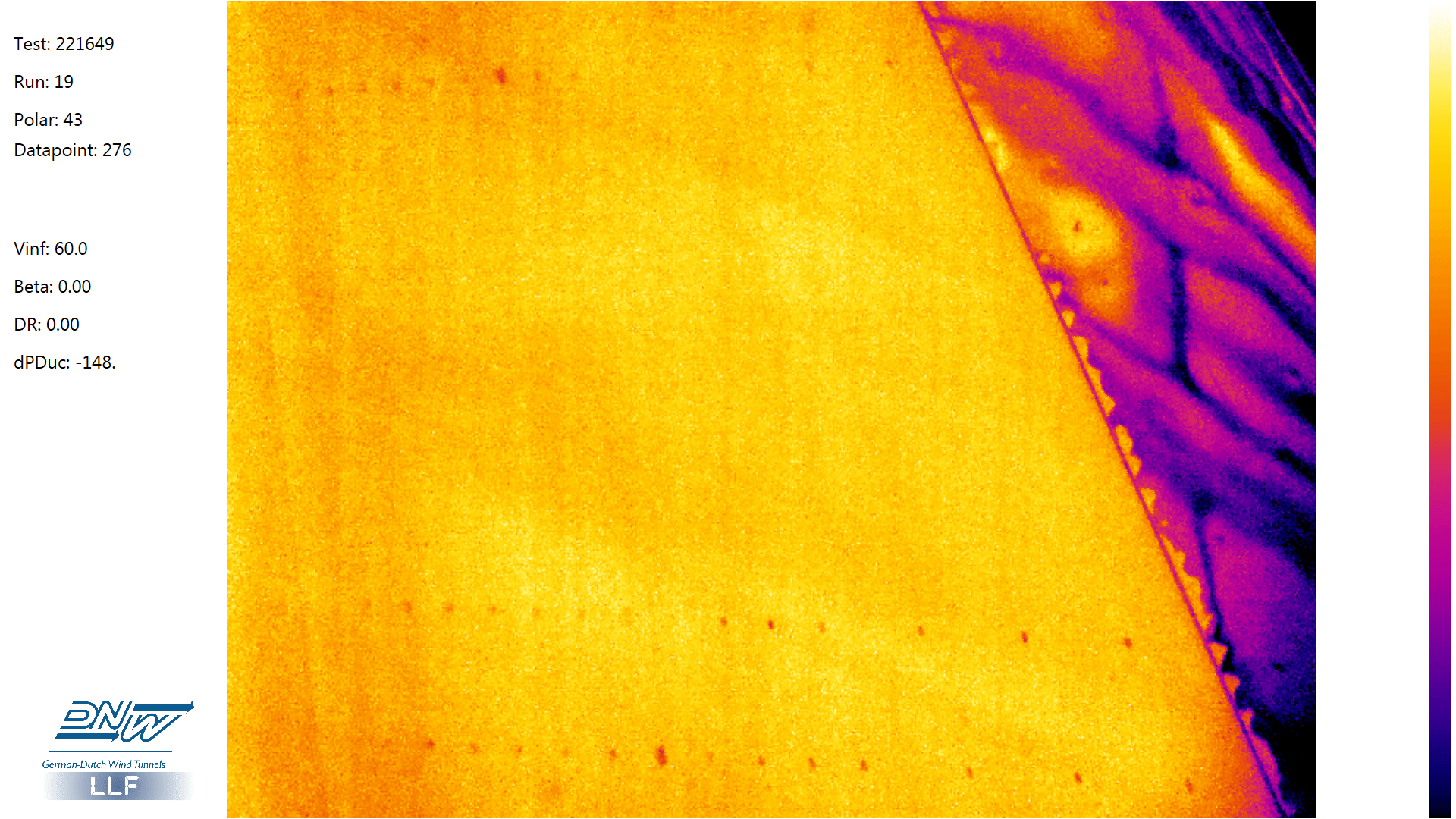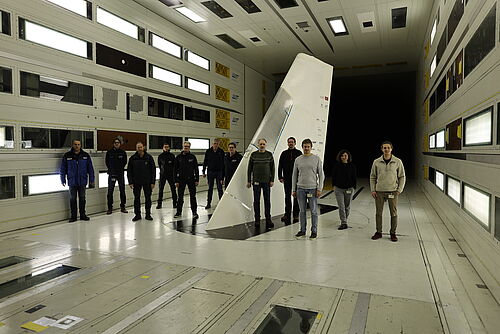
The hybrid Laminar Flow Control (HLFC) approach combining optimum wing shape and limited suction, can extend the laminar region on aircraft surfaces such as wings, fin, and fuselage. State of the art of suction panels design is with an internal chambering to provide the chord-specific suction distribution on the outer skin. This leads to a number of constraints between aerodynamic, structural design, and manufacturing. Also, the manufacturing itself is highly complex due to a large number of internal chambers. To simplify the HLFC system, the German Aerospace Center (DLR) has developed a design of suction nose that omits internal chambers, as part of previous works in the Clean Sky 2 research project NACOR (New Innovative Aircraft COnfigurations and Related Issues). The concept is called Tailored Skin Single Duct (TSSD). The TSSD is based on a multilayered tailored outer skin with an intrinsic pressure drop distribution. The outer surface is realized by a micro-perforated metallic foil to ensure a homogeneous control of the boundary layer. By the use of this tailored outer skin, only one internal collector duct with a fixed plenum pressure is necessary.
The ALVAR project demonstrated technology readiness level (TRL) four for a novel suction skin structure, the tailored skin single duct (TSSD). That is, the technology was thoroughly tested at representative conditions in a large laboratory. DLR manufactured a suction nose that was tested on a full-scale wind tunnel model of a vertical fin that replicates the surface pressure distribution and Reynolds number of an A320 fin at cruise conditions.
ALVAR project was funded by EU Commission under the CleanSky2 program. It is a collaboration among the Institute of Fluid Mechanics at TU-Braunschweig, the German-Dutch Wind Tunnels (DNW), and the German Aerospace Center, DLR. The experimental campaign was held at the large low-speed wind-tunnel facility (LLF) of DNW in The Netherlands.
The experiments of the fin with the TSSD have been carried out in the LLF-DNW in the Netherlands. The model (fin with the TSSD suction panel) was mounted in a test section that has a cross-section of 8 m x 6 m. The maximum speed of 100 m/s was reached. The measurement techniques used are forces balance, pressure measurements, Infrared Thermography, and Particle Image Velocimetry. One of the main objectives of the project is to infer local suction velocities across the suction insert for the first time. The outcomes of the wind-tunnel campaign will be presented in various conferences, and the data will be used for design, validation, and uncertainty analysis.
If successful, the ALVAR project will pave the way for introducing the technology to the wings and tail surfaces of large future commercial aircraft. That could reduce the fuel consumption by 12-15%, with similar savings on the greenhouse effect of the Earth’s atmosphere.



TU-Braunschweig: Prof. Dr.-Ing. Rolf Radespiel, Dr. Camli Badrya, Dr.-Ing. Peter Scholz, Alexander Barklage, M.Sc.
DNW: Dr. Bart van Rooijen
DLR: Dr.-Ing. Arne Seitz, Dr.-Ing. Matthias Horn
The Foundation DNW (German-Dutch Wind Tunnels) was established in 1976 by the Dutch National Aerospace Laboratory (NLR) and the German Aerospace Center (DLR), as a non-profit organization under Dutch law. DNW owns the largest low-speed wind tunnel in Europe, the LLF, and operates the aeronautical wind tunnels of DLR and NLR, which are fully integrated with the DNW organization.
Peer-reviewed Journal contributions
Conference Publications
Peter Scholz, Alexander Barklage, Bart van Rooijen, Arne Seitz, Matthias Horn, Camli Badrya, Rolf Radespiel, Large-Scale Wind Tunnel Testing of an Advanced Hybrid Laminar Flow Control System, Deutscher Luft- und Raumfahrtkongress 2022, Dresden
Patents
Patent pending
Vacancies of TU Braunschweig
Career Service' Job Exchange
Merchandising
Term Dates
Courses
Degree Programmes
Information for Freshman
TUCard
Technische Universität Braunschweig
Universitätsplatz 2
38106 Braunschweig
P. O. Box: 38092 Braunschweig
GERMANY
Phone: +49 (0) 531 391-0
